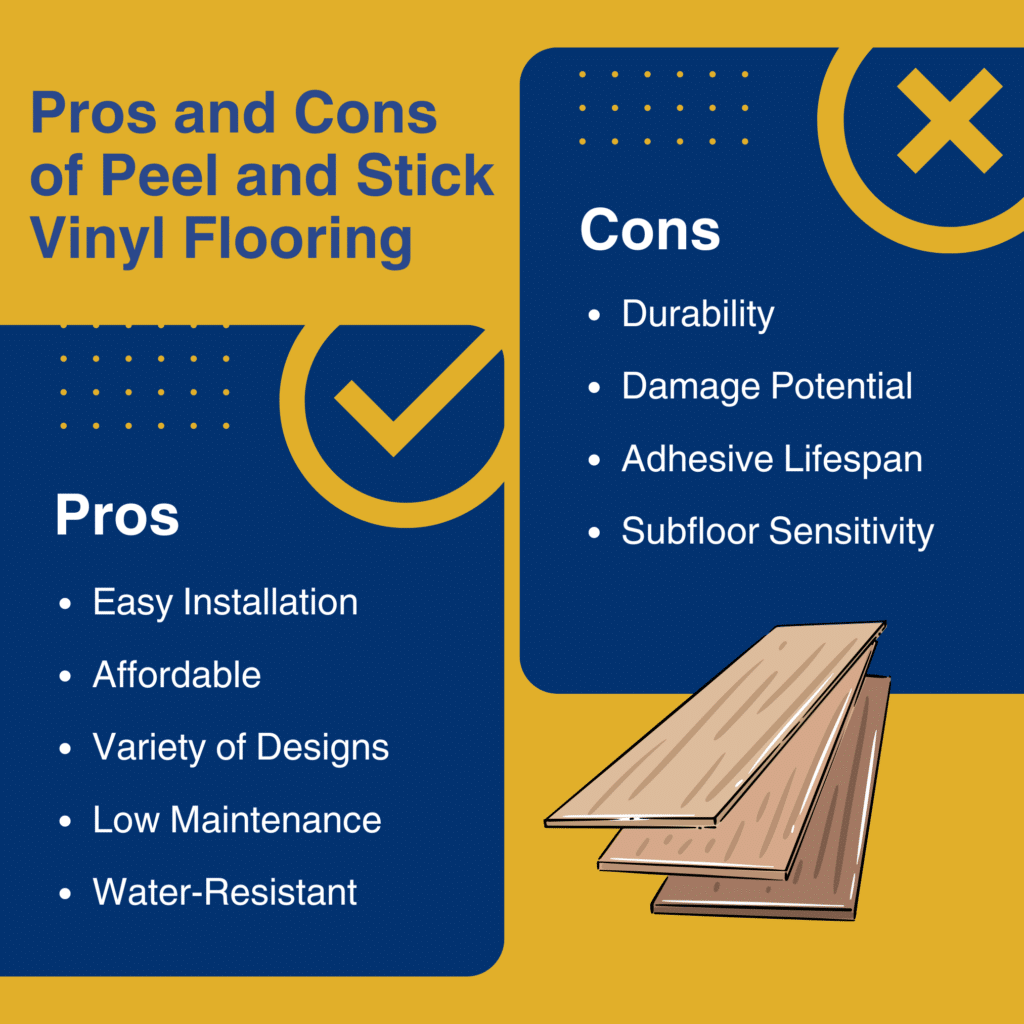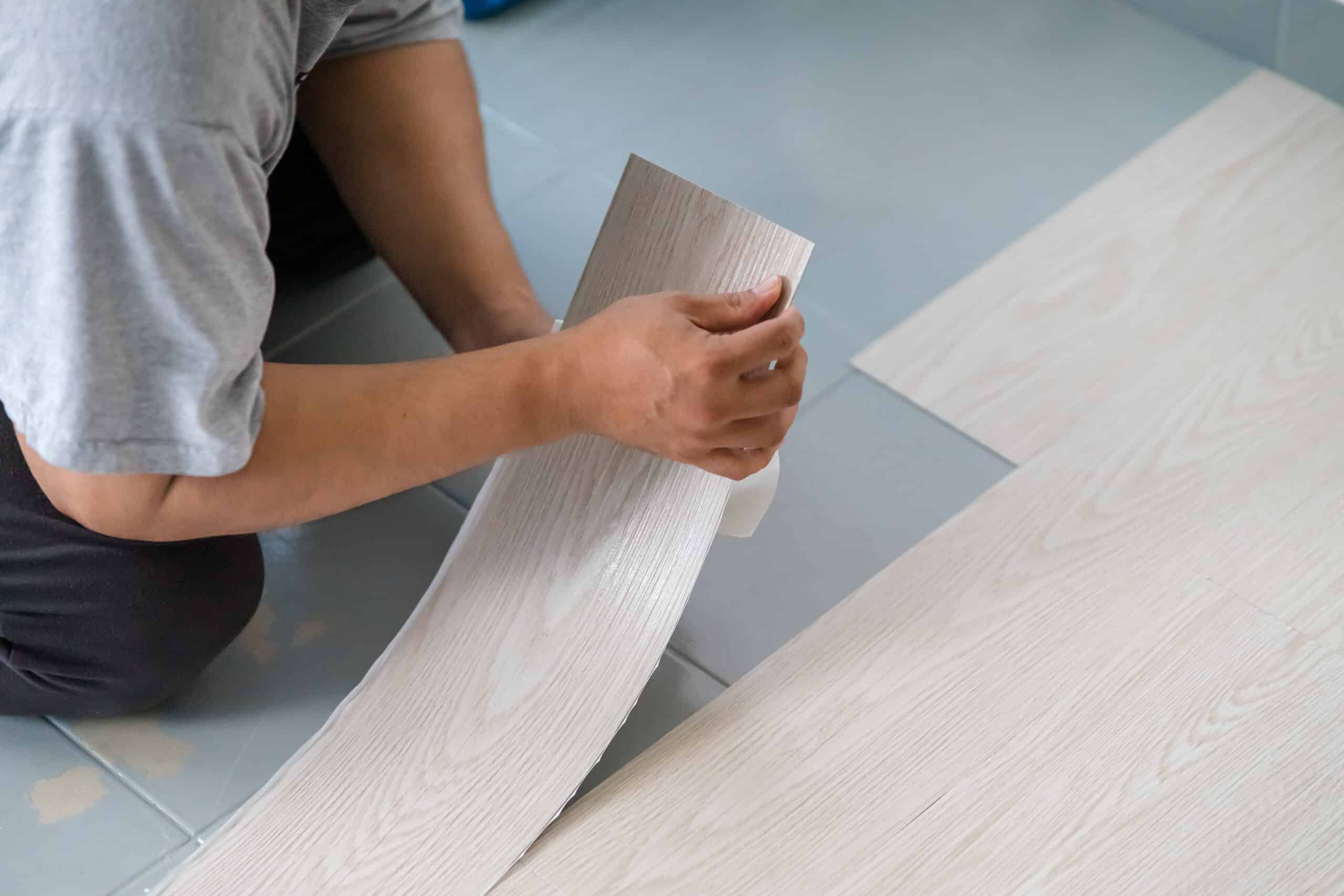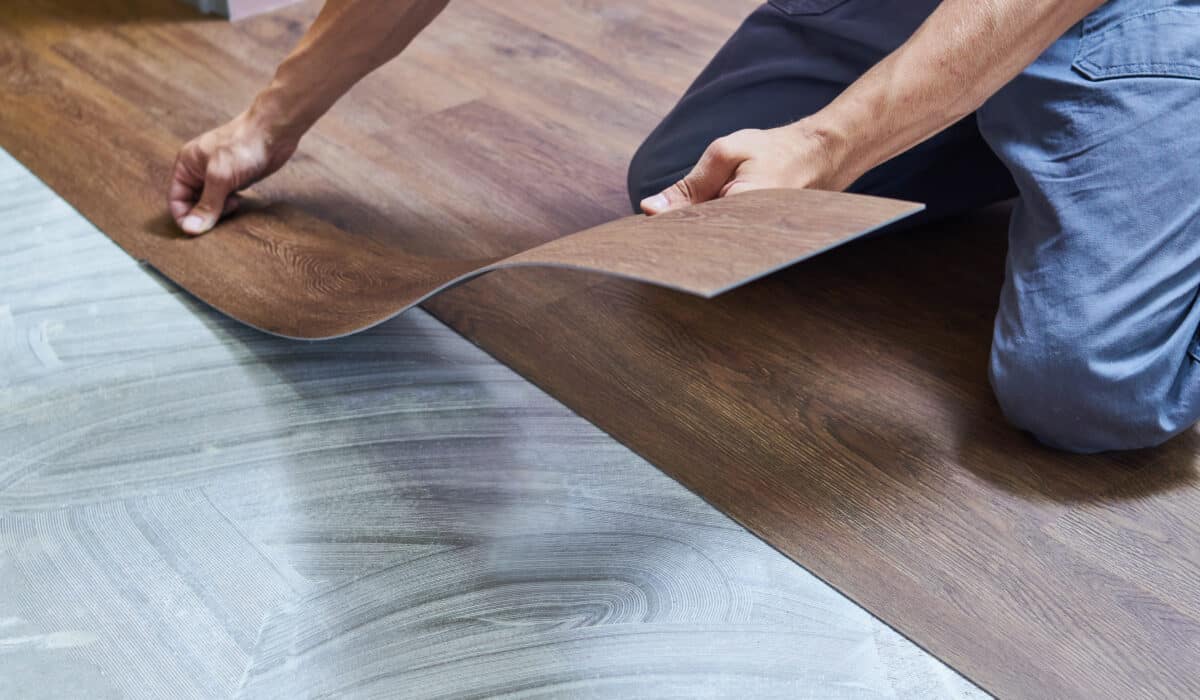Are you thinking about giving your floors a fresh look without breaking the bank or calling in the pros? Peel and stick vinyl flooring might just be the perfect solution for you! This trendy option is gaining popularity for its affordability, ease of installation, and variety of styles. But before you dive in, let’s take a closer look at what peel and stick vinyl flooring is all about and how it can fit into your home.
What is Peel and Stick Vinyl Flooring?
Peel and stick vinyl flooring is exactly what it sounds like: individual tiles or planks with an adhesive backing that you can easily peel off and stick directly onto your floor. It’s like applying a giant sticker, but for your floors!
These tiles are made from vinyl, a durable and water-resistant material, which makes them perfect for spaces like kitchens, bathrooms, and basements. Plus, with so many designs available—from sleek wood-look planks to fun geometric patterns—you can find a style that suits your taste.
Pros and Cons of Peel and Stick Vinyl Flooring
Let’s talk about the good, the bad, and everything in between. Like any home improvement product, peel and stick vinyl flooring has its pros and cons.

Pros:
- Easy Installation: No need for specialized tools or skills—anyone can do it!
- Affordable: A budget-friendly option that can mimic the look of more expensive materials.
- Variety of Designs: From classic to contemporary, there’s a design for every style.
- Low Maintenance: Spills and messes? No problem! Just wipe it clean.
- Water-Resistant: Great for areas prone to moisture like bathrooms and kitchens.
Cons:
- Durability: While it holds up well in most areas, it might not be the best choice for high-traffic zones.
- Damage Potential: Heavy furniture or sharp objects can dent or scratch the surface.
- Adhesive Lifespan: Over time, the adhesive might weaken, causing edges to peel up.
- Subfloor Sensitivity: It’s crucial to have a smooth, clean surface underneath, or you might run into problems later.
Installation Tips and Common Mistakes
Installing peel and stick vinyl flooring is pretty straightforward, but there are a few things to keep in mind to ensure your project is a success.
Preparation:
- Clean and Level: Make sure your subfloor is clean, dry, and level. Any bumps or debris can show through the vinyl or cause it not to stick properly.
- Measure Twice, Cut Once: Plan your layout carefully, especially if you’re using tiles with patterns.
Installation:
- Peel and Stick: Start by peeling off a small section of the backing, align your tile or plank, and stick it down. Work in small sections to avoid bubbles or misalignment.
- Seamless Finish: Use a roller or a heavy object to press down each tile, ensuring it adheres properly and lies flat.
Common Mistakes:
- Skipping Subfloor Prep: Ignoring imperfections in the subfloor can lead to uneven flooring and peeling tiles.
- Not Acclimating Tiles: Let your tiles adjust to the room’s temperature for 48 hours before installation to avoid expansion or contraction issues.
- Rushing the Job: Take your time—careful installation leads to a better-looking and longer-lasting floor.
Maintenance and Longevity
Keeping your peel and stick vinyl flooring looking fresh is easy with a few simple steps. Start with routine care by regularly sweeping or vacuuming to remove dirt and debris that can scratch the surface, and use a damp mop for deeper cleaning. It’s important to avoid harsh cleaners and instead stick to mild, non-abrasive products to protect the finish.
To extend the lifespan of your flooring, take preventative measures like placing furniture pads under heavy items and being cautious with sharp objects to avoid damage. If you notice a tile starting to lift, a quick fix is to reapply adhesive or replace it with a spare tile to maintain a seamless look.
Finally, keep an eye out for signs of wear such as fading, peeling, or irreparable damage—these are indicators that it might be time for a refresh.

Home Inspection Considerations
When it comes to home inspections, your flooring plays a big role in how your home is perceived, both in value and condition.
Impact on Home Value:
- Aesthetic Appeal: Peel and stick vinyl flooring can boost your home’s appearance, but proper installation and maintenance are key to retaining its value.
- Market Perception: Buyers appreciate a well-maintained home, and flooring is one of the first things they notice.
Common Issues Noted During Inspections:
- Peeling Edges: Inspectors might flag loose tiles or edges that could trip someone up.
- Subfloor Issues: If the subfloor isn’t up to par, it could lead to recommendations for replacement or repair.
Advice for Homeowners:
- Pre-Purchase Checks: If you’re buying a home with peel and stick vinyl flooring, ask about the installation and any issues that have come up.
- Consulting a Professional: If you’re unsure about the condition of your floors, a home inspector can provide valuable insights.
Conclusion
Peel and stick vinyl flooring is a fantastic option for those looking to update their home with minimal fuss and expense. It’s easy to install, comes in a variety of styles, and is low maintenance. However, like any home improvement project, it’s important to weigh the pros and cons and consider how it fits into your long-term plans.
If you’re considering selling your home or simply want to ensure that everything is in top condition, it’s wise to get a professional home inspection. Flooring issues, no matter how small, can affect your home’s value and safety. A home inspection can catch any potential problems early, giving you the peace of mind that your home is in great shape.

